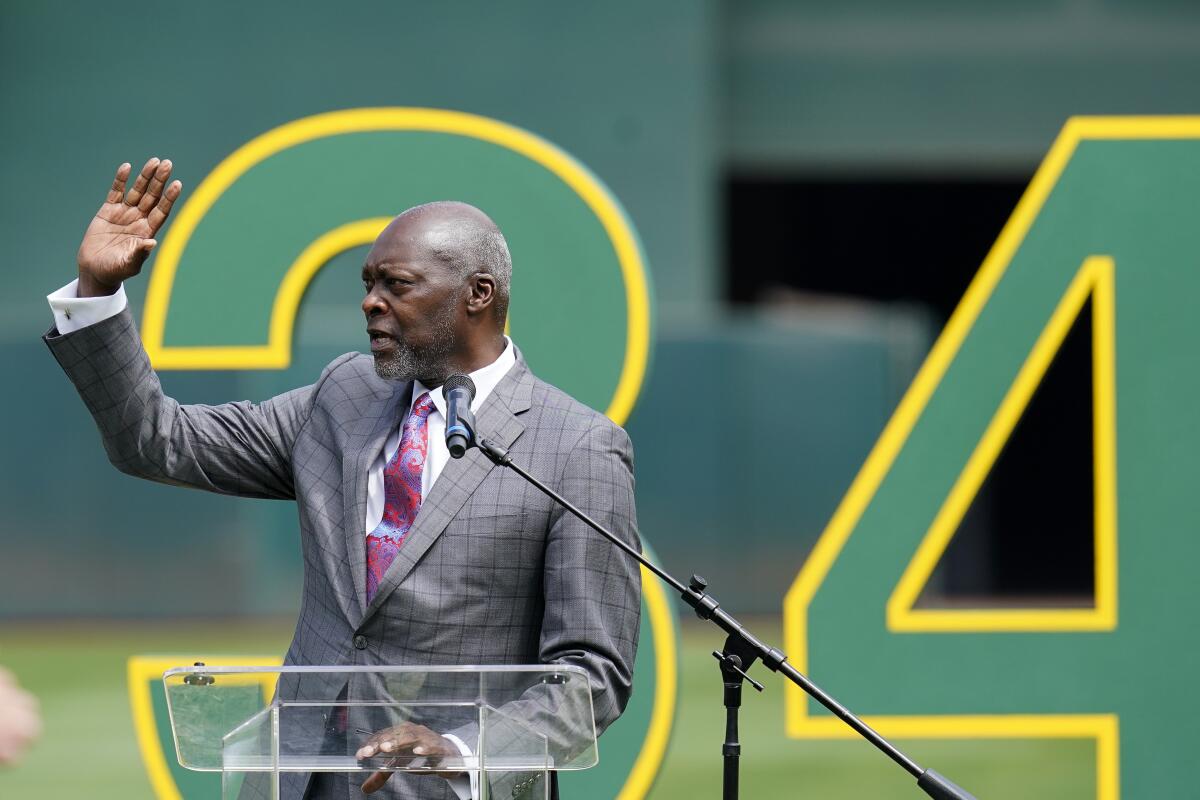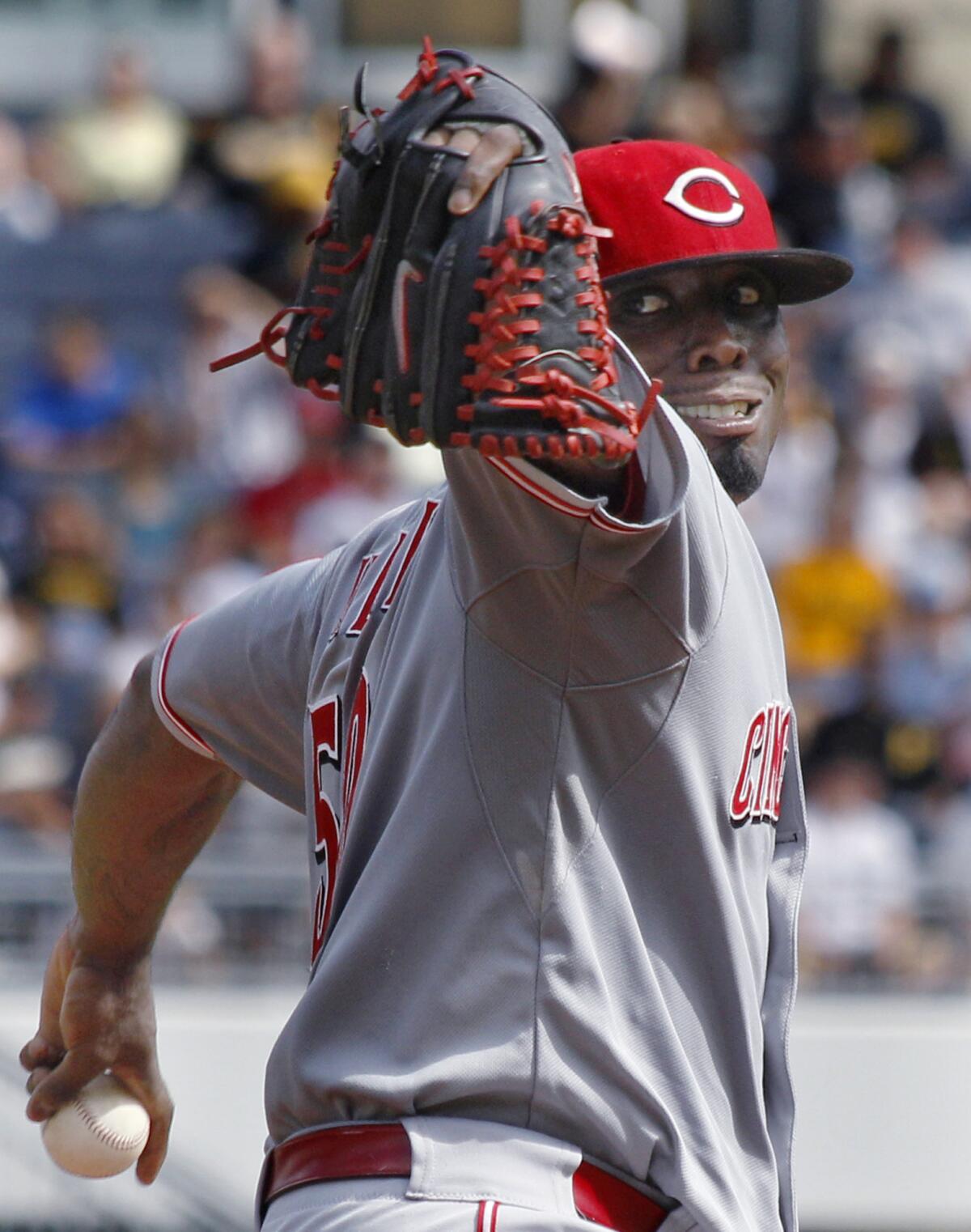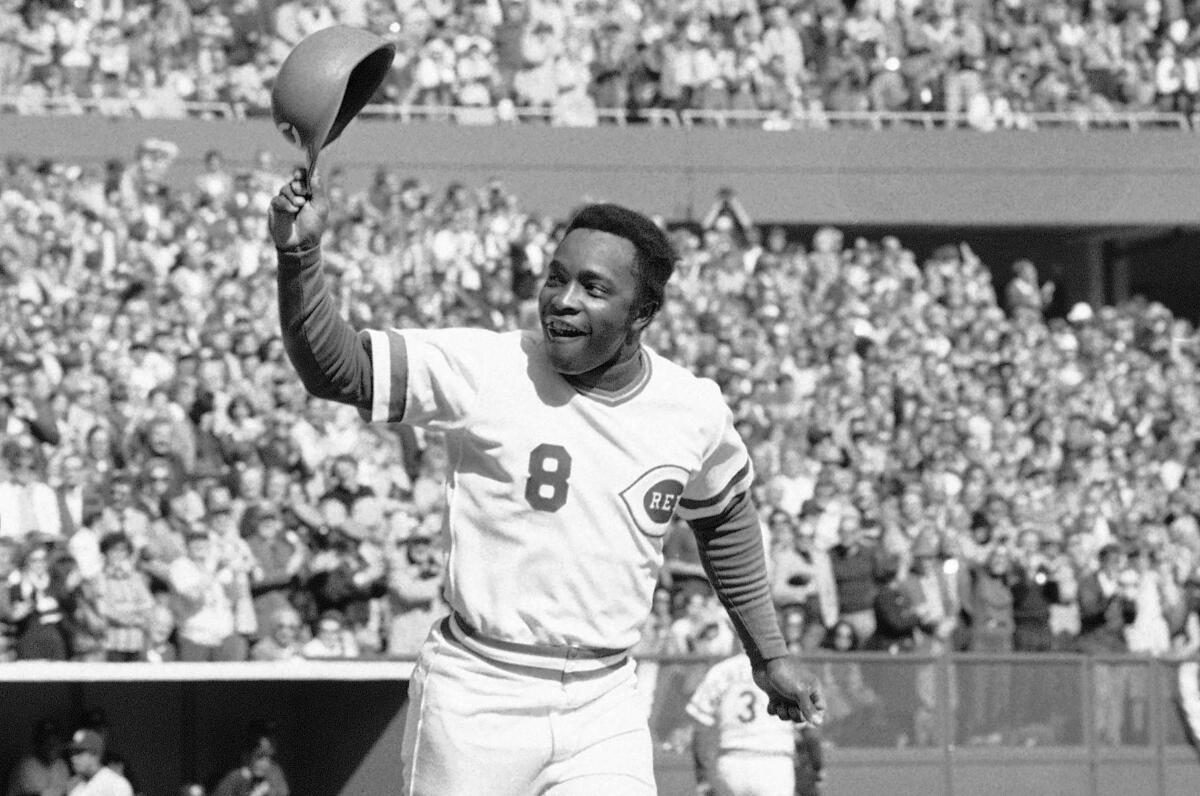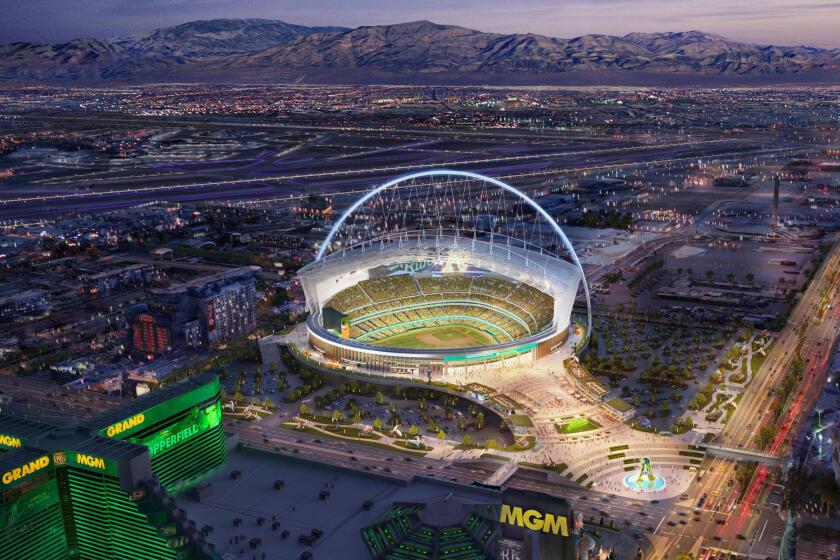Athletics’ impending departure from Oakland leaves a deep hole in East Bay

- Share via
SEATTLE — “The A’s saved my life.”
Dontrelle Willis told me that the other day, not by raising his voice, but by looking me straight in the eye. He wanted to make sure I understood the gravity of what he was saying.
Willis is a two-time All-Star, a World Series champion, and now a Dodgers broadcaster. None of that would have been possible, he says, without the team that plays in Oakland, the city where he was born.
“If I didn’t have the A’s, and the Coliseum, I wouldn’t know what I’d be doing,” he said. “The A’s, and Dave Stewart, they’re the reason I picked up a baseball. That’s what I mean about the organization being able to save my life.
“And, to be honest with you, it saved a lot of boys’ lives.”
The owners of the Oakland Athletics are not giving politicians a chance to move forward on a Las Vegas move. Rob Manfred and MLB should get involved.
Not every East Bay kid who picked up a baseball would be able to throw it with the skill Willis and Stewart had. Almost all of them would not.
But they could all dream, they could all play ball after school, and they could all head down to the Coliseum to see the major leaguers — including the likes of Rickey Henderson, Joe Morgan and Frank Robinson, hometown heroes who blossomed into baseball legends.
The A’s might have been rooted in Oakland since 1968, but they plan to move to Las Vegas by 2028.
“It’s disheartening to think that, as a result of Oakland moving, we’re going to lose a generation or more of players who won’t have the ability to go down to a ballpark and see their guys,” said Tony Clark, executive director of the Major League Baseball Players Assn.
The relocation puts Major League Baseball in an awkward position. Of the players on opening day rosters this season, 6% were Black — the lowest such figure since 1955, according to USA Today.
At the All-Star Game two years ago, the league pledged a minimum of $100 million toward programs designed to “strengthen our sport’s engagement with Black communities.”
Amid this year’s All-Star celebration, MLB appears poised to abandon the only West Coast major league city with a significant Black community.
Oakland’s population is 22% Black, according to U.S. Census data. That figure ranges from 3%-9% in Los Angeles, Anaheim, San Diego, San Francisco, Seattle and Phoenix.
The A’s might be going, going, gone from Oakland, but MLB Commissioner Rob Manfred says the league will continue its initiatives to support youth participation and player training there and elsewhere.
“Our extensive player development programs are designed to increase Black advancement in baseball and reach all corners of the United States,” Manfred told The Times. “We are encouraged by the progress being made at various levels of the pipeline.
“Our focus remains on supporting players from as many communities as possible as they advance to different participation stages of the game. Diversity remains a top priority for our entire industry and we are committed to this as a long-term effort.”
In the 2022 draft, four of the first five picks were Black, all four products of MLB development programs that the league said have accounted for 240 draft picks since 2015 and have sent 570 Black players into college baseball.
The kids who played with the likes of Stewart and Willis may have not advanced to college or professional baseball, but the biggest factor in determining if you become a lifelong fan is whether you play as a kid.
Tony Reagins, chief baseball development officer for MLB, said the league plans to continue to work with Willis, Stewart, CC Sabathia, Tyson Ross, Shooty Babitt and other former major leaguers from Oakland and the East Bay on youth baseball and softball leagues and after-school programs.
“Whether there’s a major league team there or not, our goal is to continue to impact the lives of young Black men and women,” Reagins said. “We have relationships there that are community-based and grassroots-based, so we think we can continue to do that.”

Willis is not as sure that baseball can maintain its fan base in the East Bay once the A’s leave and kids cannot see a game in their neighborhood.
“Thank God for YouTube, I guess,” he said.
The San Francisco Giants are a ferry or subway ride away. For that matter, so are the Golden State Warriors, who moved to San Francisco from Oakland. Both the Giants and Warriors put up new venues without taxpayer funding.
“We see what happens when the infrastructure and the ownership are on the same page, right across the water,” Willis said.
“For an East Bay guy, it makes us all bitter. We wish we had something like that on our side.”
Indeed, when MLB targeted the Bay Area for one of its Urban Youth Academies — a program that launched in Compton and would have been ideal for Oakland — the league instead announced the academy would be built in San Francisco. That, two league sources said, was because the Giants’ ownership pushed for it.
Stewart, a four-time 20-game winner, was honored as most valuable player of the World Series in 1989, the last time the A’s won. As a kid, he lived so close to the Coliseum that he could see the stadium lights from his backyard.
“We used to ride our bikes and chain them at the Union 76 station on the corner of 66th and San Leandro,” he said. “We’d walk down the tracks, hop the fence, and be in the stadium.”
When the A’s won three consecutive World Series — in 1972, ‘73 and ‘74 — he said the championships put the city in a desperately needed positive light.
“There were a lot of negative connotations when it came to East Oakland, and Oakland in general,” Stewart said. “People talked about the Black Panthers, the Symbionese Liberation Army, and demonstrating, and all that stuff that went on.
“It’s historic today, but it was negative in that period of time, because we were going through civil rights.”
Stewart, who is working to help attract an expansion team to Nashville, said the blame for the departure of the A’s should not all fall upon Manfred and John Fisher, the A’s owner.

He said the city of Oakland should not escape blame, not after Fisher had proposed a $12-billion development on the Oakland waterfront with a ballpark at its heart, no matter how difficult negotiations might have been over the hundreds of millions of dollars in infrastructure requests the team made of the city.
“To me, it’s a no-brainer that somehow you should find a way to make that happen,” he said, “and not after the team has decided it’s going to leave.”
Stewart also said Manfred and league officials cannot realistically compel Fisher to keep the A’s in Oakland, or to sell to someone who would.
“They can’t tell them what to do,” Stewart said. “If that were the case, you’d see more minorities, more diversity in the 30 teams that make up Major League Baseball. You can’t tell these guys what to do with their money.”
The A’s honor one player each year for community service. The honor is named after Stewart.
The Oakland Athletics have optimistically stated their proposed Las Vegas ballpark could attract ‘more than 2.5 million fans and visitors annually.’
Stewart regrets that the A’s no longer wish to serve that community. He works as an analyst on selected A’s broadcasts, out of a studio in San Francisco, not too far from the Giants’ stadium. The last time he was there, he saw a family of five, all decked out in Giants gear, headed to the ballgame.
“The tears didn’t drop, but my eyes welled up,” he said. “That will never exist or happen in Oakland after the next three to four years. It will never happen again. And that’s sad.”
Whatever MLB might do to keep baseball alive in Oakland might not be enough to keep the legacy of the A’s alive.
“It’s going to be forgotten that there even was an Oakland A’s franchise, quite frankly,” Stewart said.
“The future generations of kids that grow up in Oakland won’t even know there was ever a team there, that Rickey Henderson was one of the best players ever to put a uniform on, that Joe Morgan was one of the best players ever to put a uniform on, that Frank Robinson was one of the best players ever to put a uniform on. They won’t know that Curt Flood was the man who sacrificed himself for free agency so players could get paid.
“They won’t know that, because they won’t have anything to look at.”
More to Read
Go beyond the scoreboard
Get the latest on L.A.'s teams in the daily Sports Report newsletter.
You may occasionally receive promotional content from the Los Angeles Times.













